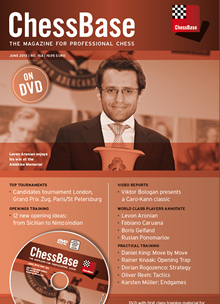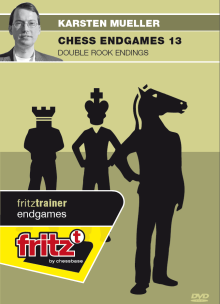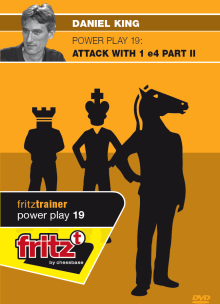Latest book
reviews of 1 July 2013
BOOKS REVIEWS BY JOHN ELBURG.
Wilhelminalaan 33
7261 BP RUURLO
The Netherlands.
John
Elburg

Chess Psychology: The will to win!
by William Stewart
2013
Everyman Chess
http://www.everymanchess.com
204 pages
Price € 18,20
ISBN 978-1-78194-027-3
There is nothing more important in chess than to have the will to win from any position, for example the great Bobby Fischer was famous for playing on in
dead even positions.
The story is that he even continued playing in a king vs king position!
William does not only cover a collection instructive games with easy to learn starting repertoire lines but covers in a understandable way the fascinating
subjects of chess psychology, it sounds strange but the most important element in chess psychology is aggression.
As Stewart explains: You have to continuously strive to create threats against your opponent in order to
win {assuming he doesn’t make a silly mistake and give you the point!}.
It is all too often that a beginner chess player arrives for the round at the tournament hall and elbows his way
through the mess around the pairing sheet only to find that he is paired up against a much higher rated opponent.
The beginner immediately suffers an anxiety attack, pestering all his friends with last minute preparation against the higher rated monster.
The beginner arrives at the board and finds that he is unprepared in the opening,leading to further panicking/depression followed
by a devastating 14move defeat. Don’t Be That Guy!
Included in this book are twenty model games where the game Fischer – Spassky,World Championship game 6,Reykjavik 1972 1.c4 e6
2.Nf3 d5 3.d4 Nf6 4.Nc3 Be7 5.Bg5 0-0 6.e3 h6 7.Bh4 b6 8.cxd5 Nxd5 9.Bxe7 Qxe7 10.Nxd5 exd5 11.Rc1 Be6 12.Qa4 c5
13.Qa3 Rc8 14.Bb5 a6 15.dxc5 bxc5 16.0-0 Ra7 17.Be2 Nd7 18.Nd4 Qf8 19.Nxe6 fxe6 20.e4 d4 21.f4 Qe7 22.e5 Rb8
23.Bc4 Kh8 24.Qh3 Nf8 25.b3 a5 26.f5 exf5 27.Rxf5 Nh7 28.Rcf1 Qd8 29.Qg3 Re7 30.h4 Rbb7 31.e6 Rbc7 32.Qe5 Qe8
33.a4 Qd8 34.R1f2 Qe8 35.R2f3 Qd8 36.Bd3 Qe8 37.Qe4 Nf6 38.Rxf6 gxf6 39.Rxf6 Kg8 40.Bc4 Kh8
41.Qf4 1-0, is even good for over ten pages of instructive chess.
Throw the book I found interesting subjects as Lots of Tutoring or Naturally Gifted? The 10.000
Hour Rule: The article’ Developing Young Chess Masters: What are the Best Moves?’by Kiewra and O’Connor
presents a detailed study confirming hard work and a positive environment are necessary requisites to create genius
in chess. Referring to young chess masters, the article states ‘These youngsters, on average, practiced chess about 20 hours per week for eight years before attaining master status.
Even if they were born with increadable gifts,it still required a 8000 practice hours to realize those gifts.
Conclusion: This is a instructive all-round learning book!
Chess Books

Chess Psychology: The will to win!
by William Stewart
2013
Everyman Chess
http://www.everymanchess.com
204 pages
Price € 18,20
ISBN 978-1-78194-027-3
There is nothing more important in chess than to have the will to win from any position, for example the great Bobby Fischer was famous for playing on in
dead even positions.
The story is that he even continued playing in a king vs king position!
William does not only cover a collection instructive games with easy to learn starting repertoire lines but covers in a understandable way the fascinating
subjects of chess psychology, it sounds strange but the most important element in chess psychology is aggression.
As Stewart explains: You have to continuously strive to create threats against your opponent in order to
win {assuming he doesn’t make a silly mistake and give you the point!}.
It is all too often that a beginner chess player arrives for the round at the tournament hall and elbows his way
through the mess around the pairing sheet only to find that he is paired up against a much higher rated opponent.
The beginner immediately suffers an anxiety attack, pestering all his friends with last minute preparation against the higher rated monster.
The beginner arrives at the board and finds that he is unprepared in the opening,leading to further panicking/depression followed
by a devastating 14move defeat. Don’t Be That Guy!
Included in this book are twenty model games where the game Fischer – Spassky,World Championship game 6,Reykjavik 1972 1.c4 e6
2.Nf3 d5 3.d4 Nf6 4.Nc3 Be7 5.Bg5 0-0 6.e3 h6 7.Bh4 b6 8.cxd5 Nxd5 9.Bxe7 Qxe7 10.Nxd5 exd5 11.Rc1 Be6 12.Qa4 c5
13.Qa3 Rc8 14.Bb5 a6 15.dxc5 bxc5 16.0-0 Ra7 17.Be2 Nd7 18.Nd4 Qf8 19.Nxe6 fxe6 20.e4 d4 21.f4 Qe7 22.e5 Rb8
23.Bc4 Kh8 24.Qh3 Nf8 25.b3 a5 26.f5 exf5 27.Rxf5 Nh7 28.Rcf1 Qd8 29.Qg3 Re7 30.h4 Rbb7 31.e6 Rbc7 32.Qe5 Qe8
33.a4 Qd8 34.R1f2 Qe8 35.R2f3 Qd8 36.Bd3 Qe8 37.Qe4 Nf6 38.Rxf6 gxf6 39.Rxf6 Kg8 40.Bc4 Kh8
41.Qf4 1-0, is even good for over ten pages of instructive chess.
Throw the book I found interesting subjects as Lots of Tutoring or Naturally Gifted? The 10.000
Hour Rule: The article’ Developing Young Chess Masters: What are the Best Moves?’by Kiewra and O’Connor
presents a detailed study confirming hard work and a positive environment are necessary requisites to create genius
in chess. Referring to young chess masters, the article states ‘These youngsters, on average, practiced chess about 20 hours per week for eight years before attaining master status.
Even if they were born with increadable gifts,it still required a 8000 practice hours to realize those gifts.
Conclusion: This is a instructive all-round learning book!


